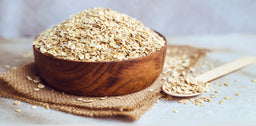
Which of the 5 most popular types of fasting is best?
Pros and cons of common forms of fasting for health and fat loss.
Short term fasting has got more popular in recent years, with fans of it saying it helps them maintain their weight, control appetite, and even improve long term health outcomes.
If you’ve looked into the science behind fasting and have decided it’s the right option for you, you might be wondering which type of fasting is best.
We’ve looked at 5 of the most common ways to use fasting so you can choose the one that suits you.
Time restricted or eating window fasting
This style of fasting is a form of intermittent fasting (IF) which you do every day. It involves setting an eating window, during which time you eat all of your day’s calories. Once the eating window has closed, you fast.
There’s no set duration of a time restricted eating window. Most people choose anywhere from 3-12 hours. The only rule is you repeat the same pattern every day.
This form of fasting has been positively linked with improved blood sugar levels and sustainable weight loss. Experts recommend longer eating windows for slower, sustained fat loss.
Pros: easy to do, sustainable
Cons: may not fit with social events
16:8 fasting
This regimented form of time restricted eating involves using a 16 hour fast followed by an 8 hour eating window every day. You can put the 8 hour eating period anywhere you like within your 24 hour period.
Pros: easy to remember, realistic
Cons: may become restrictive over time
The 5:2 diet fasting
This style of fasting is considered a reasonable way to add long term fasting to your lifestyle. 5:2 involves eating your normal diet 5 days a week, then fasting on very low calories (usually around 500kcal) for 2 days a week. On fasting days there are no time windows or meal timing restrictions, just ultra-low calories.
This form of fasting essentially lowers your total weekly caloric intake, and as a result it can be effective for weight loss and weight maintenance.
Pros: minimally intrusive, can work with a training programme
Cons: may be difficult to limit calories on fasting days
Modified alternate day fasting
Original “alternate day fasting” involves eating every other day (fasting days include fluids but no calories). This form of fasting has been liked to positive outcomes in decreasing “bad” cholesterol. A more realistic modified version uses a very low number of calories on fasting days (usually 20% of typical intake).
Pros: easy pattern to remember
Cons: unsociable, may lead to overeating, likely to lead to headaches, dizziness, lack of focus
Water fasting
This style of fasting involves cutting out all food and only drinking water (or black tea/coffee) for a set amount of time. Science is sketchy on this one, and there’s little guidance on how long to maintain the water fast. Some people do 24 hours, others do 72 hours. Some people have been known to push a water fast for a week or longer.
Pros: no rules to remember, just don’t eat
Cons: hard to stick to, anti-social, deprives body of nutrients, may damage relationship with food
How to choose a style of fasting for you
We’re not here to tell you whether or not fasting is a good idea. That’s for you to decide – please do your research, including looking at the science. Weigh up the pros and cons of fasting compared to other dietary interventions that could give you the outcome you’re looking for.
If you do come to the decision that fasting is right for you, choose a form of fasting that will be psychologically positive for you. No style of eating (or not eating!) should damage your relationship with food or mess up your social life or relationships.
Start by trialling your chosen form of fasting for 1-2 weeks and keep a record of how you feel, your energy, sleep, mood, and how the fast impacts your life. As with any way of eating, it’s not just about the physical outcomes, so pay attention to the overall impact on your life.
Head to the Gravity Fitness store for top quality calisthenics and functional fitness equipment with next day delivery.












































